Genre: Sports Publisher: Codemasters Developer: Audiogenic Software Players: 1-4 Released: 1996
As a non-British European, I remember what it was like to encounter a video game simulation of an American sport for the first time. I must have been eight or nine years old, but I distinctly recall sitting in front of my console, trying out different cartridges and – since I couldn’t speak much English at the time – attempting to figure out the rules of each sport. Ice hockey was pretty straightforward, especially when it was possible to ignore offsides. Basketball also wasn’t much of a problem, though it took me a few years – and a sports class in high school – to figure out what “goaltending violation” meant – and I don’t know of any basketball game even attempting to simulate a technicality like a “double dribble.” Baseball video games usually boiled down to “just hit the damn ball and hope it’s a home run” for me – a strategy that usually worked surprisingly well. American football though took quite some time figuring out: What’s a “first down?” How does the scoring work? Why can’t I pass the ball whenever I want? What does “fake punt” mean? I think I’d never have tried understanding all of that hadn’t my parents mistakenly gifted a copy of John Madden Football to me one day – they had thought it was a soccer game. Nevertheless, once I figured out what everything meant and how it all tied together, I had a lot of fun with that game. Which goes to show that even if you’re not familiar with a particular sport, you still can draw a lot of enjoyment out of a console simulation of it.
Which leads me to this game. When it came to a sports simulator that utterly managed to confound me, I didn’t have to look across the Atlantic – a short glance at a game produced and only released on the virtually neighboring British Isles sufficed. After my first try at Brian Lara Cricket ‘96, I was flabbergasted. The usual approach of “just start a game, try to hit the ball and see what happens” didn’t work here. I couldn’t even make out when I was controlling the game or when the AI took over. Worse, even though I had selected what I thought was the shortest length, it still felt like an eternity until the match was done. It took me a while to realize that this was because unlike in seemingly-similar-on-a-very-superficial-glance baseball, in Cricket a round doesn’t end until every single player had had his turn. And that’s not the only factor drawing out the length of the game. This isn’t an arcadey short fun-time approach to bringing sports into your living room. No, this game is a serious simulation, and it tries to emulate every single facet of Cricket as closely as possible – while still allowing for handicaps or adjustments in order to make easing into the game potentially simpler. And with its somewhat complicated rules, Cricket is definitely something that takes quite a bit getting used to – both the sport and its video game adaptation.
So, to do a proper and fair review of Brian Lara Cricket ‘96, I first had to do a bit of research in order to familiarize myself with the sport. After all, while Cricket may not be so well-known in the U.S. or in most European states other than the UK, it is a very popular pastime in the West- and East Indies (including the Indian subcontinent), New Zealand and Australia. In fact, during research I found out that, while I thought Brian Lara Cricket ‘96 – endorsed by Trinidad-born “Prince” Brian Lara, considered to be one of the greatest batsmen of this era – was exclusively circulated around the UK like its predecessor (due to the nature of the sport these two games weren’t even officially brought to the other European countries), the ’96 iteration of the game was also released in Australia under the name Shane Warne Cricket – this time endorsed by the local bowler legend of the same name (for those not familiar with Cricket lingo, the bowler is the person who throws the ball – somewhat similar to a pitcher in baseball, though there are a number of technical differences between those two). Other than a roster update and the change in celebrity on the cover, the two games are practically identical, though.
To properly play the game one has to understand the different roles each player has. In the simplest of terms, there are bowlers, batsmen and fielders. Bowlers deliver the ball to the batsman on the cricket pitch – unlike the pitcher in baseball. He does so while running up towards the batsman and letting the ball bounce off the ground while throwing. The batsman himself tries to hit the ball away from the so-called fielders. After a hit, he and another batsman of his team located on the other side of the pitch (also referred to as a “no-fielder”) can attempt to run between the two creases of the cricket pitch – the more often they manage a successful run, the more points they gather for their team. Once either the bowler or one of the fielders manages to hit the wickets – three sticks placed behind the batsman on the cricket pitch – and successfully dislodge them with a throw, the batsman is out, and the next team member takes his place on the pitch. Once all batsmen of a team are out or a fixed number of overs (one over per six countable balls bowled without being hit) are done, the other side gets to bat. Considering that one cricket match can consist of several games taking place over the course of several days (usually five), the score can run up very high, easily into three digits, You may even fall behind 100 points or more and still catch up and turn the game around.
When starting a new match in Brian Lara Cricket ’96, players get to choose from 12 international and 18 regional (mostly British) teams. As with the upcoming trend in sports games of the time, it is also possible to create your very own team, though you should be very familiar with all the different stats a batsman, fielder or bowler can have before even attempting to create a competitive selection. Beginners are highly recommended to start out with the lower Amateur difficulty as well, otherwise you won’t see any light of the day when facing the AI. When starting out, one should also opt to select automatic Fielding, since catching the ball after a bat manually is very tricky at first. Getting the hang of the pitching and batting mechanics when starting out is hard enough to start with. It’s also important to consider which batsman you want to put up against which bowler; aside from the importance of putting up a strong bowler (the lower the stats on a bowler, the better he is) against a weak batsman (here, the strength is determined the other way round), there are also three distinct bowling styles to consider. More on those later.
As I hinted at before, unlike in baseball, you can’t expect to just walk up to the plate and hit the ball right out of the field in cricket. Even with all the running between the creases, it’s a comparatively slow, almost sedate affair. Batsman can choose low ground shots (hitting the A button), high over the top shots (pressing B) or simply defending and letting the ball bounce off the bat (by pressing up + B). Likewise, hitting a direction on the control pad causes a different style of shot, whether it is a straight drive right along the middle, a wide hook shot or an attempt straight at the opposing midwicket. Bowling is even more complex: There are three different types of bowlers (fast, swing and spin – some bowlers can even switch between one of two styles). You get to aim where you want to throw the ball, and once that is determined, you hammer the controller button in order to increase speed and power. The manual hints that “timing is crucial,” and it took me a while that this refers to both the speed in which you hit the buttons in order to build up speed and hitting the right button in order to release the ball with the intended amount of power. It’s practically exhausting at first. Strangely enough, even with all the button mashing going on, you’d be surprised at the variety and versatility each throw can result in once you’ve practiced bowling for a while.
What came as a bit of surprise to me is that, for such a game with a relatively limited target audience, the developers put a lot of thought and detail into it. The graphics on the pitch view are nice to look at, and the players have some surprisingly good animation for a 16-bit game. Sadly, the fielding doesn’t look quite as good; the sudden switch to a top-view perspective whenever a batsmen has successfully hit the ball is quite jarring and disorienting. It takes some getting used to before the sudden change in controls and directions allows you to properly direct a fielder towards a ball manually – hence the option to let fielding occur automatically. Maybe that’s also the reason why the controls for running between the creases as the batsman are rather simplistic: Just press A and the player changes direction; his running speed is only determined by his stats.
The sound fits the mood of the game itself: Fittingly for a game with a slow pace and a long runtime, sound effects are reduced to balls hitting wood and the occasional swoosh of a ball thrown. Quality is nice though. Of course, if you preferred something action-packed and adrenaline-filled, you’re at the wrong address here: There’s no cheering audience and hardly any yelling by players or umpires. It’s an almost somber affair. You can tell that the developers took some care catching the atmosphere of a cricket pitch. They even included a random possibility of the umpire suddenly calling the game off due to bad weather – this is the only game I know off that felt the need to include such a feature.
Interestingly enough, as with other Codemasters-releases around the time, both Brian Lara Cricket ‘96 and its Australian sibling Shane Warne Cricket were released as J-Carts, with two additional gamepad ports in the back of the cartridge. That means yes, the game sports a four-player-mode. You can even have four players on the same team, with each one taking control of one of the crucial team member types: One controls the bowlers, another one the fielders, the third one the batsmen and the fourth takes charge of the no-fielders. Even if the latter one only has one job – pressing A in order to have his player running up or down the pitch at the right moments – and you rarely have two players take charge simultaneously, this way of delegating teamwork turns out surprisingly well.
This game certainly won’t convert anyone instantly into a Cricket fan. It is neither of the pick-up-and-play variety, nor is it well suited for instant gratification and short, quick playthroughs. But if you’re willing to familiarize yourself a bit with the sport, you may find this game strangely appealing. The mechanics are very good, graphics and animations are mostly well-done, and the sound suits the atmosphere very well. In terms of authenticity and simulation, Brain Lara Cricket ‘96 is probably as accurate as a video game adaptation of that sport can possibly be. So, if you’ve got a lazy Sunday afternoon with nothing to do, and you’re looking for a way to pass a few hours, pop open a beer or pour yourself some nice cup of tea and give this game a try. It’s certainly not the most action-packed experience under the sun – but then again, it really isn’t meant to be.
Score: 8 out of 10

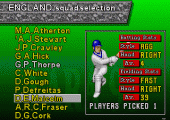
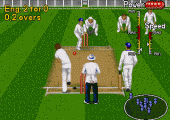
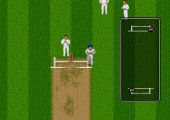
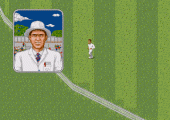
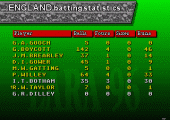
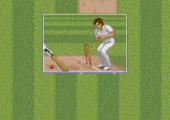
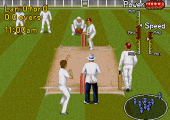


Recent Comments